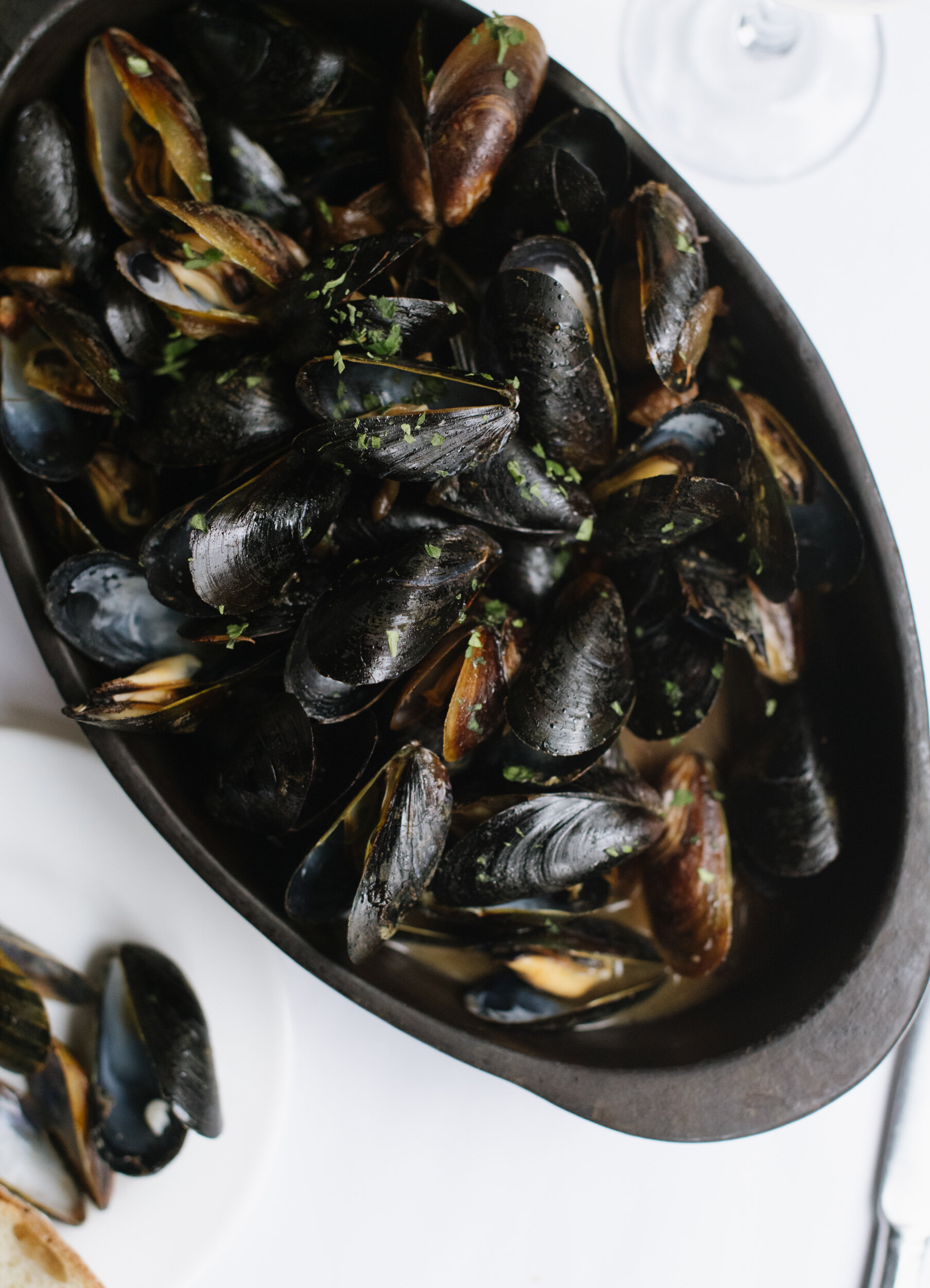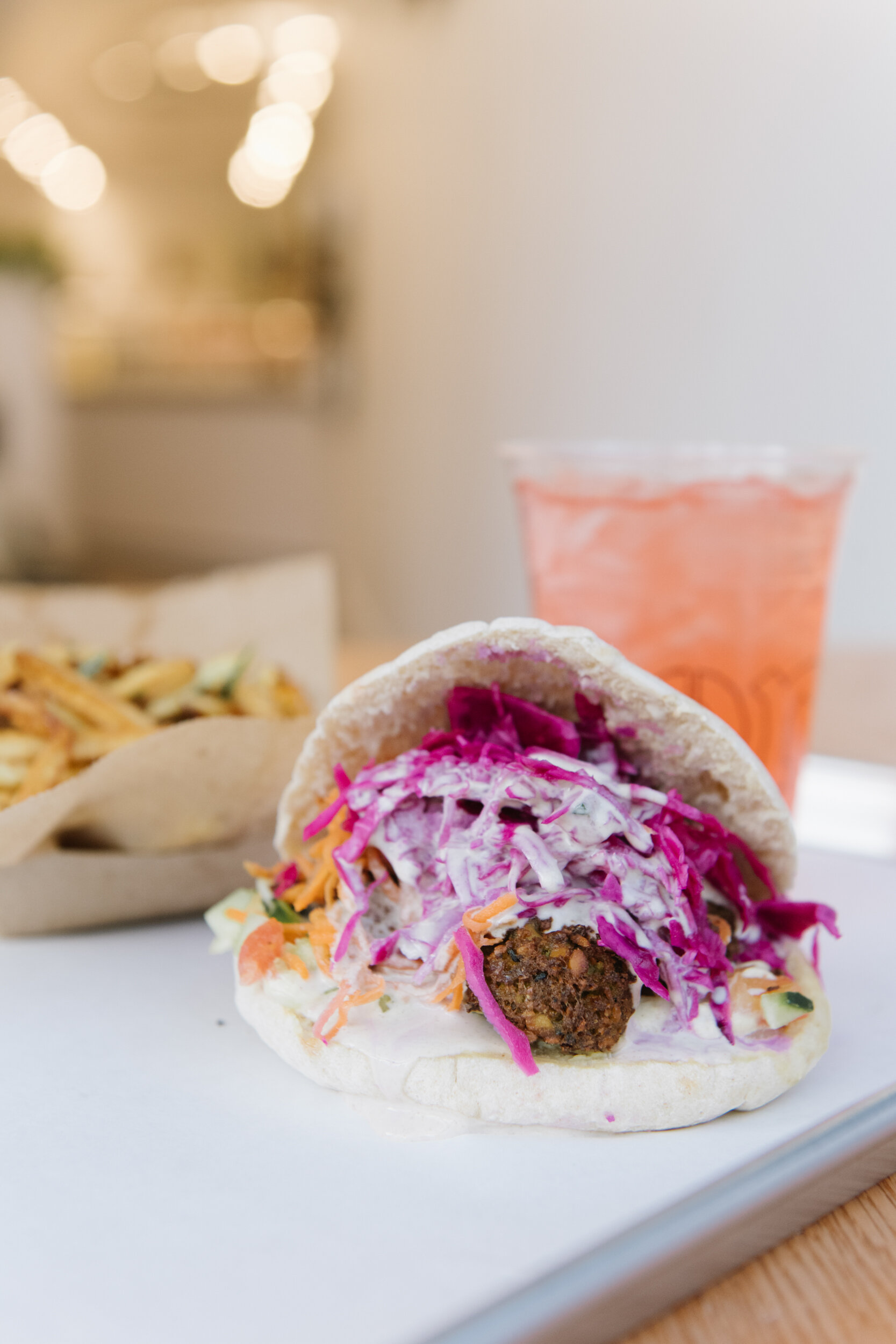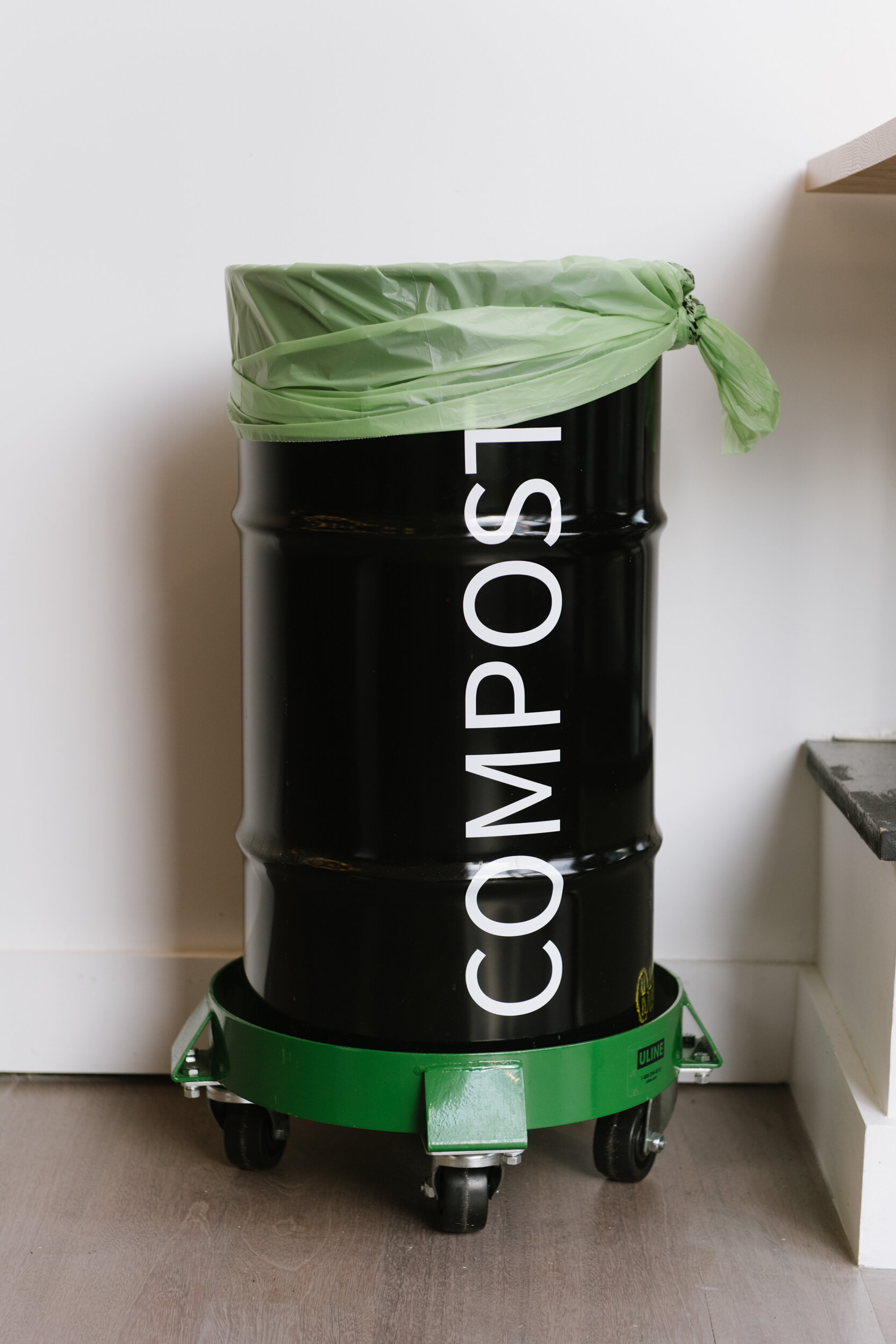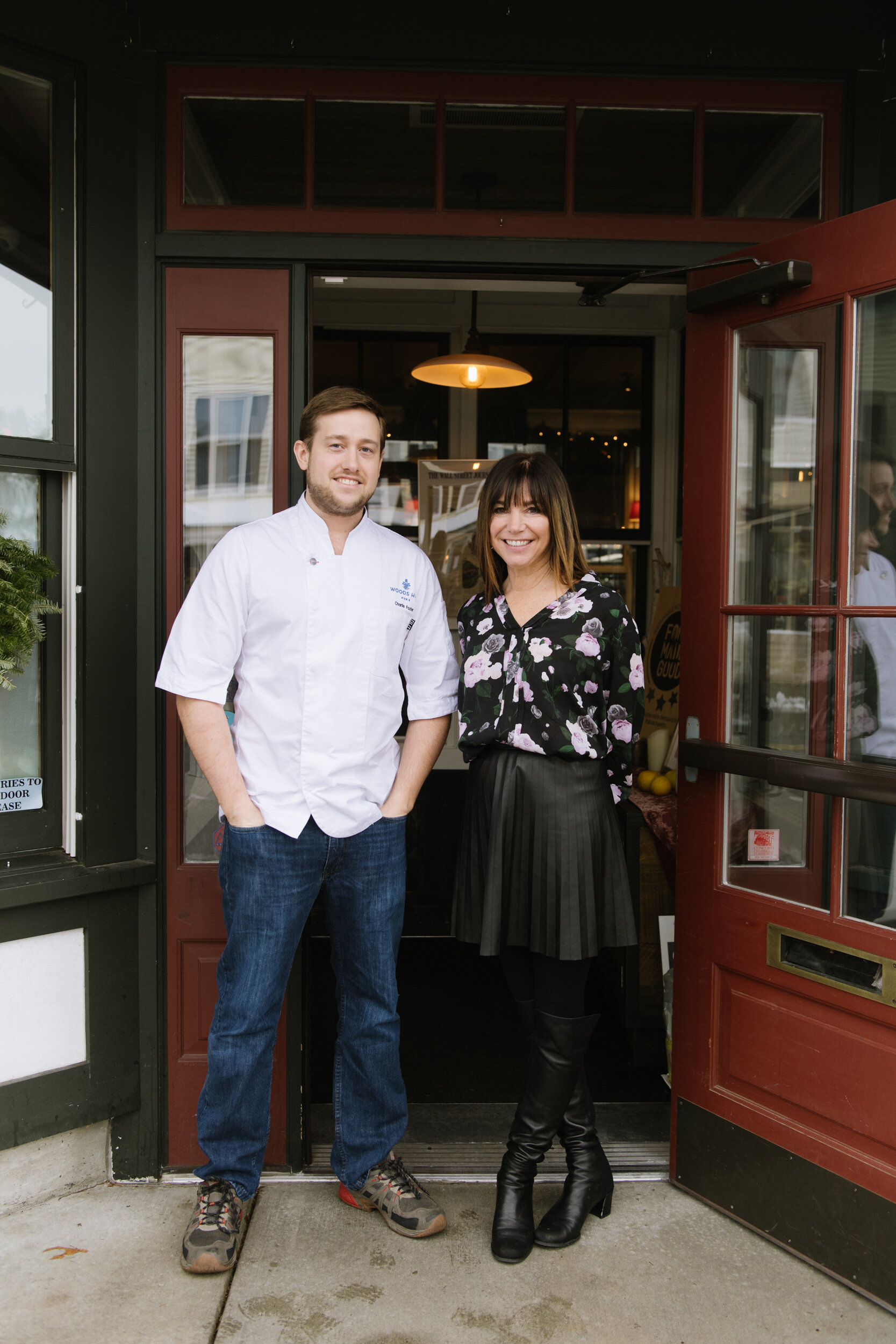Toward a Greener Tomorrow: restaurants lead the way with win-win-win sustainability measures
Photos by Katie Noble
Some years ago at Taranta, an Italian-Peruvian restaurant in the North End, chef and owner José Duarte noticed a trend. Each plate left the kitchen with four asparagus spears. At the end of most meals, one spear lingered uneaten.
A single asparagus? Who cares?
But that became part of Taranta’s multifaceted journey to becoming one of the most eco-friendly restaurants in the city, winning a City of Boston Green Business Award in 2008 and a Massachusetts Recycling Award in 2011. Duarte says that sustainability efforts at Taranta grew very pragmatically.
“First of all, it was a business decision,” he says, born of frugality in an industry-wide economic downturn. Winterizing the building and switching lightbulbs to LED would help cut down on their monthly bills, plain and simple. Then, installing water-efficient valves revealed the holistic nature of sustainability—the low-flow, high-pressure water valves reduced water consumption, but cutting down on hot water also cut the energy needed to heat the water, lowering two bills at once.
The savings snowballed. As Duarte saw the results from these small changes, he saw more opportunities. Small-business green initiatives helped cover the cost of energy-efficient appliances, which Michael Oshman, founder and CEO of the Green Restaurant Association, an international nonprofit headquartered in Boston, says can save a restaurant thousands of dollars and kilowatt hours every year. Taranta even converted company vehicles to run on waste vegetable oil from the kitchen’s fryer.
And the asparagus?
Zoom out for a second. Wasting one out of four, 25%, of that asparagus is a microcosm of the Massachusetts waste stream. The state Department of Environmental Protection reports that about one quarter of our waste is food. Stepping even further back reveals that more cropland is dedicated to growing what becomes food waste than the entire acreage of the state of New Mexico. The National Resource Defense Council (NRDC) estimates that about one-fifth of all U.S. cropland, farming fertilizer and water usage, and landfill content is essentially spent on garbage. The food waste itself contributes to global warming as it rots in landfills. The cycle is expensive and destructive—in the end, the NRDC says that $218 billion per year pays for greenhouse gases equivalent to the output of 37 million passenger vehicles.
“So, I said, ‘All right, we put three asparagus, not four,’” says Duarte. Making this type of thoughtful menu change and migrating from regular garbage pickup to recycling and compost cut Taranta’s hauling bill by half.
These efforts matter to customers. In 2018, the National Restaurant Association reported that about half of consumers across all age groups say that a restaurant’s efforts to recycle, donate food or reduce food waste can be factors in where they choose to dine. Informally, Duarte estimates that Taranta’s garbage reduction and adoption of composting kept 80 or 90 metric tons of CO2 out of the atmosphere. And Taranta isn’t alone in its efforts to mitigate its impact. The restaurant industry has begun to see sustainability as a win-win-win proposition: It saves money, it’s good for the environment and it attracts customers and staff who share those values. Restaurants across Boston are using a variety of tactics to work towards sustainability.
Take meat, for example. The New York Times reported in 2018 that meat production accounts for up to 18% of global human-induced greenhouse gas emissions. Eating less of it could reduce our environmental impact, and that’s where Clover Food Lab comes in. It started in 2008 as an experiment because, says Ayr Muir, Clover’s founder and CEO, “I was curious whether we could find a way to help people who love meat eat more meals without it.” To his admitted surprise, it worked. Clover has since grown from a single food truck to 13 fast-casual vegetarian restaurant locations across greater Boston.
Muir says that surveys show that 90% of the restaurant’s customers are not vegetarian. This, he says, is Clover’s greatest contribution to sustainability: the substitution impact of serving a vegetarian meal to somebody who would normally be eating meat. Because of beef’s large environmental footprint, Muir guesses it would take up to 20 of Clover’s popular chickpea fritter sandwiches to equal the environmental impact of just one hamburger served elsewhere.
Plant-forward philosophies like Clover’s have gained traction across the country. The National Restaurant Association says that in 2018, “veggie-centric” cuisine was among the top 10 trends on restaurant menus. And yet, in the big picture, veggie-centric doesn’t always mean sustainable. Most restaurants build their menu based on demand, the dishes they think customers want—juicy peaches in summertime, let’s say. Yet because the supply chain starts months earlier, peaches featured on an early-summer menu probably weren’t grown in season. “It’s like a losing game for any local or regional farmers,” says Muir. “We start by doing the reverse, saying: ‘What do you have a lot of that’s really delicious?’” Clover buys in-season produce from local farmers and builds dishes around it, focusing on supply rather than demand, supporting careful resource allocation. Then, when a dish runs out, it’s really gone, at least until next year. “Our customers expect that and have adapted to that. We don’t keep everything stocked,” says Muir. The restaurant doesn’t have freezers, and about 10% of menu items will change in any given day, depending on what runs out and what’s delivered from local farms.
The U.S. Department of Agriculture hasn’t officially defined “local,” but eating food sourced nearby typically reduces the number of “food miles,” or the distance something traveled to get onto your plate. Keeping food miles low is a sustainability concept not only because it can help money stay in the community, but also because it can mean less spent fuel and resources. Whereas Clover relies on a network of local small farms, Woods Hill Table in Concord sources directly from its own farm. Whatever the farm doesn’t provide is purchased from nearby farmers or producers. Kristin Canty, an advocate for small farms who also directed and produced a documentary called Farmageddon: The Unseen War on American Family Farms, owns Woods Hill Table and its younger sister Woods Hill Pier 4, which opened in November in Boston’s Seaport District. She also owns a 260-acre farm in New Hampshire, a former maple farm that’s now the source of much of the meat, eggs and produce used in the restaurants. Incorporating the Farm at Woods Hill directly into its supply chain allows Woods Hill Table more control over the dishes it can serve within a system constantly striving towards resource conservation. Woods Hill Table recently received the highest rating from the UK’s Sustainable Restaurant Association (SRA), so far the only restaurant in New England to do so.
Woods Hill Table Chef Charlie Foster describes the focus on sourcing organic, local and ethically produced food as “a constraint that we put on ourselves that gives us purpose. We don’t serve pasta amatriciana because we want to be another restaurant in Boston serving Italian food … we serve it because we raised those pigs, we cured those jowls and we know that it was sustainably sourced.”
Sustainable seafood is another priority, as 90% of the world’s fisheries are now fully exploited, over-exploited or have collapsed. Fish served at Woods Hill Table is wild-caught and rated “Best Choices” by the Monterey Bay Aquarium’s Seafood Watch. Capitalizing on underutilized choices like whelk and swordfish belly on the menu at Woods Hill Pier 4 also helps to reduce stress on fisheries. Complementing this thoughtful sourcing is a careful and thorough use of resources. Animals raised on the farm are humanely butchered and used in their entirety—beef fat, for example, is rendered into tallow to cook the French fries. And the Sunday Supper at Woods Hill Table echoes Tony Maws’ Chef’s Whim from his days at Craigie Street Bistro, repurposing surplus ingredients into family-style dishes to prevent waste prior to the restaurant’s weekly Monday closure.
Woods Hill Table makes their suppliers sign a code of conduct pledging ethical and environmental requirements. The idea that companies should commit to ownership over the social and environmental impact of their scope just as much as on the economic impact is not a new one. In 1994, sustainable development authority John Elkington named it the Triple Bottom Line, noting that “people, planet and profit” are so thoroughly enmeshed that only a business that tracks and measures success in all three areas can be transparent about its full value—and value, in this case, means more than just finances. Targeting profit alone conceals a company’s social and environmental impact. In other words, a company rich from poor environmental practice has little actual value.
Taranta also takes its social commitment to sustainability very seriously, advocating for the rights of agricultural workers. “Tomatoes can be grown on super clean land and have a super clean footprint,” says José Duarte, “but the hand that picked it is worked under modern-day slavery.” Taranta has also been involved with a social impact project that will bring a well-resourced eco-lodge hotel to a small agricultural community around the Andean village of Santa Cruz de Huaripampa, in the central Andean region of Peru; here at home, the restaurant is dedicated to its staff’s development and to strengthening its network of local producers. Sustainability, this win-win-win concept for the restaurant industry, isn’t just in a few hippie cafés. It’s in the forefront of customers’ minds. And it’s now among the top six criteria that young people consider when deciding between colleges, says Michael Oshman of the Green Restaurant Association. Now is the time for restaurants to seize the opportunities and benefits that come from embracing all angles of sustainability.
“I just have a ton of optimism,” says Clover’s Muir. “The way we eat has such a huge impact on the environment, and I’m excited to see more and more people understanding that. I’m expecting that in five years, in 10 years, we’ll see a big difference. Things like this hit tipping points. Change is happening in a really substantial way.”
Clover Food Lab
cloverfoodlab.com
Green Restaurant Association
dinegreen.com
Taranta
tarantarist.com
Woods Hill Table
woodshilltable.com
This story appeared in the Winter 2020 issue.













